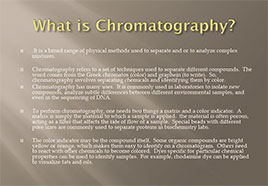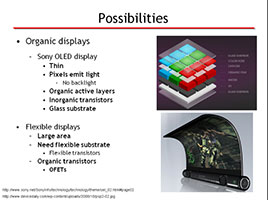Short answer and essay questions
Question: Why does a balloon filled with air at room temperature (25 ºC) shrink when placed into liquid nitrogen (-196 °C)?
Answer 1: “The balloon shrinks because the volume of air at a given pressure is proportional to temperature, as given by the ideal gas law: PV = nRT. This means that when the temperature decreases so does the volume”.
Answer 2: “When the balloon gets colder the air takes up less space.”
Answer 1 is better because it supports the statement with evidence, whereas, Answer 2 restates the fact that the balloon changes size but does explain the logic behind the answer.
Lab reports
(Find even more in the Examples Section of the CI Writing Guide)
Upper Division Chem. 300-400 Level
Abstract
A concise summary of the entire report (a good reason why it should be the last section you write) including the techniques used, results, and statistical information such as the uncertainty in a measurement.
Introduction
The introduction should give sufficient background to give your data context. This should not be the full history of the subject or technique (unless requested). It should state the purpose of experiment, give the rational for the experimental design, and explain how the resulting data will provide sufficient evidence to support the purpose of the experiment or to find the result of interest. Include any key equations. If the point of the lab is to replicate a known value, state the literature value and reference your source.
Summary of Results
A summary section is a useful overview of key results that will directly be used to support the conclusions of the report. It is not a place to restate every calculation.
Discussion of Results
This is where you analyze your data and show you understand what was found during the lab, how it was found and how you know you found actually found it. From your data and calculations, you will have a set of results that will need explaining and solid support given for those explanations. Error analysis should be included in this section.
Conclusion
Final remarks about the experiment and discussion of future work or what questions this experiment raised that require further investigation to answer.
Lower Division Chem. 100-200 Level
Introduction
The introduction should be a brief (2-3 sentences) statement of what you will accomplish in lab and how you will do it. Think of this as the thesis statement of the lab. The procedure in the manual gives you all of the steps to complete the experiment; the introduction is your chance to demonstrate you understand how those steps create the overall purpose of the lab.
Summary of Results
A summary section is a useful overview of key results that will directly be used to support the conclusions of the report. It is not a place to restate every calculation.
Discussion of Results
This is where you analyze your data and show you understand what was found during the lab, how it was found and how you know you found actually found it. From your data and calculations, you will have a set of results that will need explaining and solid support given for those explanations. Error analysis should be included in this section.
Introduction for a lower division lab
“The equilibrium constant of reaction 1 will be calculated by measuring the peak visible absorbance of the product. The absorbance will be translated into concentration by the use of a calibration curve that was created by measuring the absorbance samples of known concentration. The literature value will be used as a comparison for the calculated equilibrium constant.
Fe3++ SCN- ⇋ [FeSCN]2- Reaction 1"
Discussion for a lower division lab
“This lab qualitatively tested the hypothesis that the reaction of sodium metal and water creates sodium hydroxide and hydrogen gas.
2 Na(s) + 2 ⇀ H2O 2NaOH + H2 (g)
Production of a gaseous product was confirmed by the bubbles observed during the reaction. The collected gas was found to be flammable when exposed to flame, lending support for the evolution of hydrogen. The presence of hydroxide was confirmed by testing the pH of the solution with phenolphthalein. When the indicator was added to the reaction solution it turned pink confirming an elevated pH. A sample of the water used in the experiment was also pH tested to confirm the change in pH was due to the reaction."
Presentations
Bad Slide

- Very small font: Use 18 point font or larger on slides.
- The audience will try to read the text and not listen to the presenter.
- No images to help support the ideas presented.
Better Slide

- Bullet pointed key words
- Images to illustrate ideas
- Citations for the images and information appear as footnotes on the slide.
